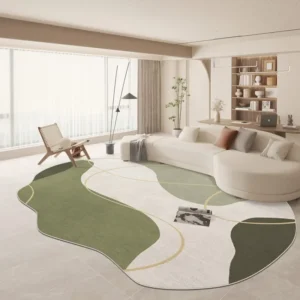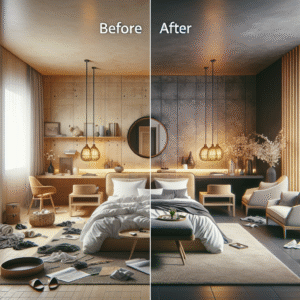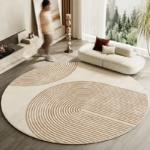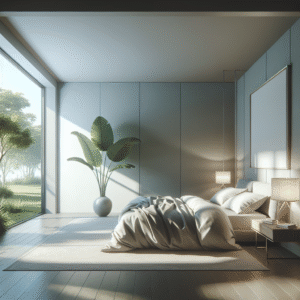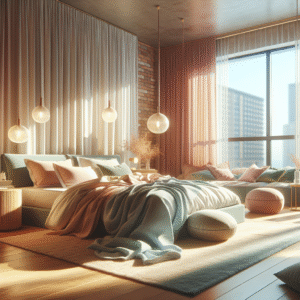Imagine coming home after a long day, stepping into a living space that feels warm and inviting without the need for your heater. Welcome to the world of passive solar design. As energy costs soar and environmental concerns rise, the principles of passive solar design offer an elegant solution that can make any home more energy-efficient and comfortable. In this comprehensive article, you’ll learn how to harness the sun’s energy for heating, cooling, and lighting your space, ultimately reducing your carbon footprint and utility bills.
Here’s what we will cover:
- An introduction to passive solar design
- The five key principles of passive solar design
- Understanding the climate and site selection
- The importance of thermal mass and insulation
- Real-world examples and case studies
- Actionable tips for your own home
- A comprehensive FAQ section
Understanding Passive Solar Design
Passive solar design is an architectural approach that optimally incorporates solar energy to enhance a building’s thermal comfort and reduce energy consumption. Unlike active solar systems, which rely on mechanical systems (like solar panels), passive solar design relies on natural elements and strategic architecture for heating and cooling. This method can significantly benefit homeowners looking to live sustainably and reduce energy costs.
Benefits of Passive Solar Design
- Energy Efficiency: A well-designed passive solar home can reduce heating and cooling needs by up to 50%.
- Cost Savings: Lower energy bills lead to substantial long-term savings, often making the initial investment financially viable.
- Comfort: It enhances indoor comfort with stable temperatures and reduced drafts.
- Environmental Impact: A reduction in energy consumption means lower greenhouse gas emissions.
The Five Principles of Passive Solar Design
1. Site Selection
Choosing the right site is paramount for effective passive solar design. Look for sites that provide maximum exposure to sunlight, especially during winter months. Trees should be strategically placed to provide shade in summer while allowing sunlight to penetrate in winter. This balance can drastically increase your home’s energy efficiency.
2. Orientation
The orientation of your home plays a significant role in passive solar design. Ideally, your living spaces should face south to capture direct sunlight while minimizing exposure on the north side. This orientation helps in harnessing natural light and heat, thus reducing the need for artificial lighting and heating.
3. Thermal Mass
Thermal mass refers to materials that can absorb and retain heat. High mass materials like concrete, brick, or stone can stabilize temperature fluctuations. These materials store heat during the day and release it at night, creating a comfortable living environment. Consider incorporating thermal mass in your home’s floors and walls.
4. Insulation and Air Sealing
Proper insulation is crucial to maintaining the temperatures regulated by thermal mass and solar gain. Invest in high-quality insulation materials for your walls, roof, and floors. Moreover, air sealing helps prevent unwanted drafts, keeping your home comfortable and energy-efficient.
5. Window Design
Windows are one of the critical components of passive solar design. Properly placed and sized windows can enhance sunlight penetration while minimizing heat loss. Use high-performance glazing and consider shading devices to protect against excessive heat during the summer. Aim for a balance that allows generous light while preventing overheating.
Understanding Climate and Site Selection
Different climates demand different approaches to passive solar design. For example:
- Cold Climates: Maximize solar gain and minimize heat loss with south-facing windows and high insulation.
- Hot Climates: Minimize heat gain while maximizing ventilation and shading to keep homes cool.
- Temperate Climates: Balance solar gain and shading based on seasonal changes.
Real-World Examples and Case Studies
Let’s look at some real-world examples of successful passive solar designs.
Case Study: The Zome House
This innovative home in Arizona employs an unusual approach by incorporating both passive solar principles and modern materials. The design features a central courtyard, strategically placed thermal mass, and overhangs that prevent overheating during summer while allowing winter sun penetration.
Case Study: The Earth Sheltered Home
In Switzerland, this earth-sheltered home uses the natural insulation of the earth combined with smart window placements to achieve year-round comfort and remarkable energy savings. The walls utilize thermal mass effectively, demonstrating the powerful synergy between site selection, thermal mass, and insulation.
Actionable Tips for Your Own Home
Implementing these proven passive solar design principles can be transformative. Here are a few actionable tips:
- Conduct an energy audit to understand your current energy usage and identify areas for improvement.
- Evaluate your home’s orientation—strategically placing windows for maximum sunlight can be a game changer.
- Incorporate landscaping that shades during hotter months while allowing sun access in the winter.
Frequently Asked Questions
What is passive solar design?
Passive solar design utilizes architectural principles to harness solar energy for heating and cooling without the use of mechanical systems.
How does thermal mass work?
Thermal mass materials absorb heat during the day and release it at night, helping to stabilize indoor temperatures.
Can passive solar design work in my existing home?
Yes! You can improve your current home’s energy efficiency with simple adjustments like window placements, adding thermal mass, and improving insulation.
How do I choose the right site for passive solar design?
Look for locations that offer good sunlight exposure, with considerations for surrounding trees and buildings that can provide seasonal shade.
What are the costs associated with passive solar design?
Initial costs can vary depending on the design complexity and materials used, but many homeowners find long-term savings on energy bills worth the investment.
Conclusion & Next Steps
Passive solar design presents a sustainable pathway to enhance your home’s efficiency while reducing dependence on conventional energy sources. By implementing key principles such as site selection, effective window design, and optimal thermal mass usage, you can create a comfortable home that benefits both you and the environment. For further exploration, consider reading our articles on energy-efficient appliances and sustainable landscaping alternatives.
Are you ready to transform your living space? Begin your passive solar design journey today!
Content Disclaimer
The information provided in this article is for educational purposes only and should not be considered professional advice. Consult a qualified expert for specific advice regarding your home and its unique circumstances.
Categories
- Accent Walls & Ceilings (13)
- Art Curation & Gallery (28)
- Bedding Style Trends (41)
- Bedroom Makeover (33)
- Bohemian & Eclectic Styles (13)
- DIY & Budget-Friendly Decor (12)
- Eco-Friendly Design (13)
- Furniture Care (32)
- Home Decor & Design Ideas (102)
- Home Wellness Spaces (13)
- Integrated Outdoor Living (12)
- Kids and Nursery Decor (13)
- Living Room Decor (33)
- Minimalist & Japandi Style (16)
- Mix & Match Techniques (32)
- Modern & Contemporary Design (12)
- Rug Sizing & Placement (32)
- Seasonal Home Decor (35)
- Small Space Solutions (17)
- Wall Art & Painting Tips (35)
Recent Posts
Recent Comments
Archives
Product Gallery
-
 Large Area Green Rugs for Bedroom Nordic Living Room Decoration Shaped Carpet Irregular Plush Lounge Rug Home Thick Washable Mat Rated 5.00 out of 5$57.07 – $359.83Price range: $57.07 through $359.83
Large Area Green Rugs for Bedroom Nordic Living Room Decoration Shaped Carpet Irregular Plush Lounge Rug Home Thick Washable Mat Rated 5.00 out of 5$57.07 – $359.83Price range: $57.07 through $359.83 -
 Nordic Style Rugs for Bedroom Morandi Living Room Decoration Carpet Large Area Geometry Lounge Rug Home Cloakroom Non-slip Mat Rated 5.00 out of 5$40.98 – $620.81Price range: $40.98 through $620.81
Nordic Style Rugs for Bedroom Morandi Living Room Decoration Carpet Large Area Geometry Lounge Rug Home Cloakroom Non-slip Mat Rated 5.00 out of 5$40.98 – $620.81Price range: $40.98 through $620.81 -
 Irregular Shapes Living Room Decoration Carpet Modern Style Rugs for Bedroom Home Thicken Plush Rug Fluffy Soft Lounge Floor Mat Rated 4.75 out of 5$58.00 – $360.83Price range: $58.00 through $360.83
Irregular Shapes Living Room Decoration Carpet Modern Style Rugs for Bedroom Home Thicken Plush Rug Fluffy Soft Lounge Floor Mat Rated 4.75 out of 5$58.00 – $360.83Price range: $58.00 through $360.83





